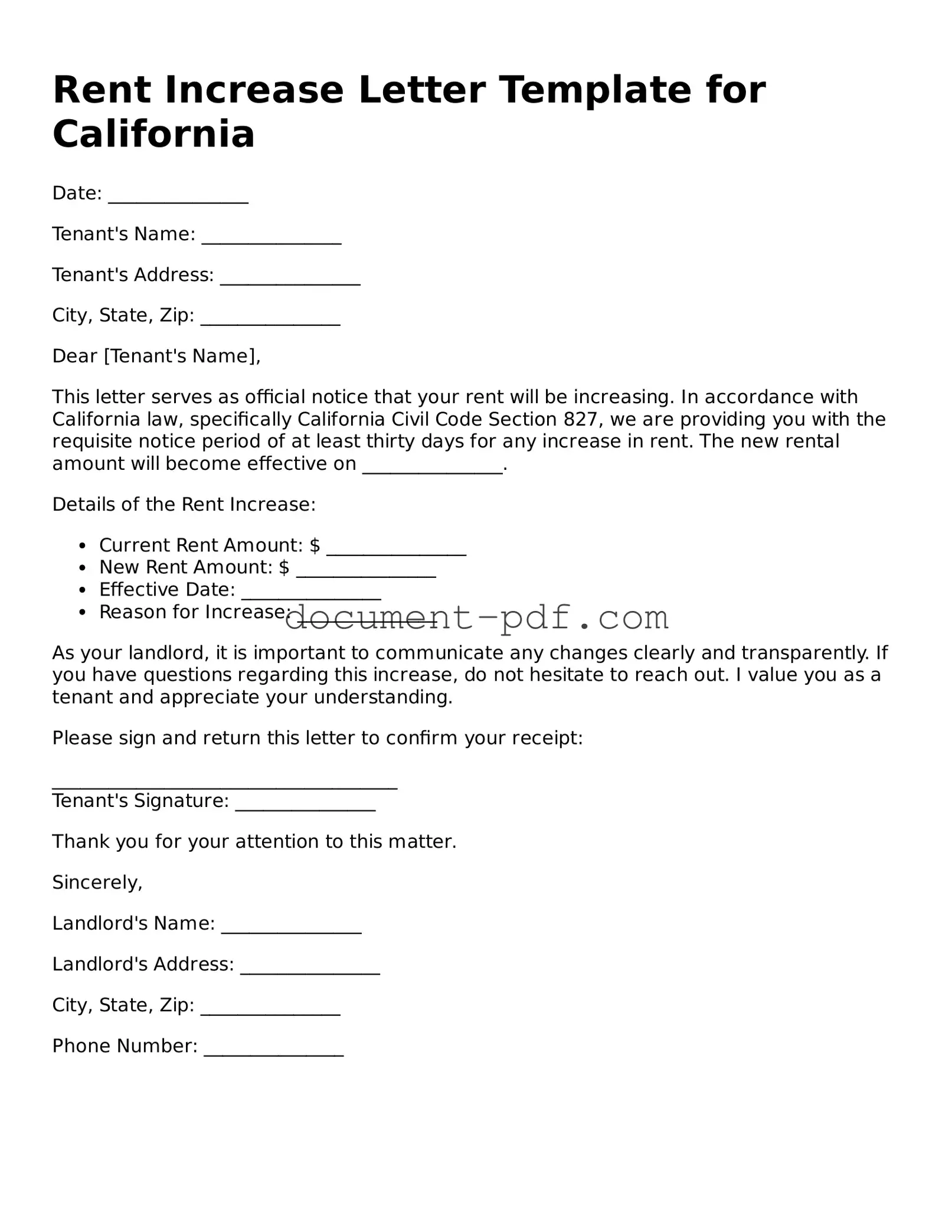Rent Increase Letter Template for California
Date: _______________
Tenant's Name: _______________
Tenant's Address: _______________
City, State, Zip: _______________
Dear [Tenant's Name],
This letter serves as official notice that your rent will be increasing. In accordance with California law, specifically California Civil Code Section 827, we are providing you with the requisite notice period of at least thirty days for any increase in rent. The new rental amount will become effective on _______________.
Details of the Rent Increase:
- Current Rent Amount: $ _______________
- New Rent Amount: $ _______________
- Effective Date: _______________
- Reason for Increase: _______________
As your landlord, it is important to communicate any changes clearly and transparently. If you have questions regarding this increase, do not hesitate to reach out. I value you as a tenant and appreciate your understanding.
Please sign and return this letter to confirm your receipt:
_____________________________________
Tenant's Signature: _______________
Thank you for your attention to this matter.
Sincerely,
Landlord's Name: _______________
Landlord's Address: _______________
City, State, Zip: _______________
Phone Number: _______________
